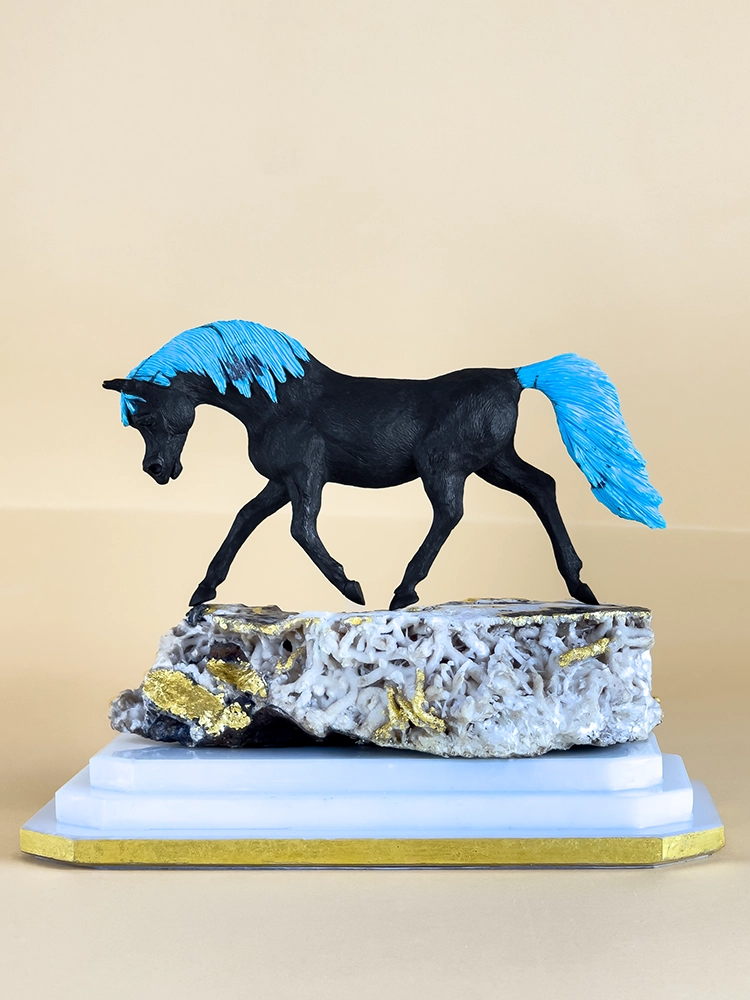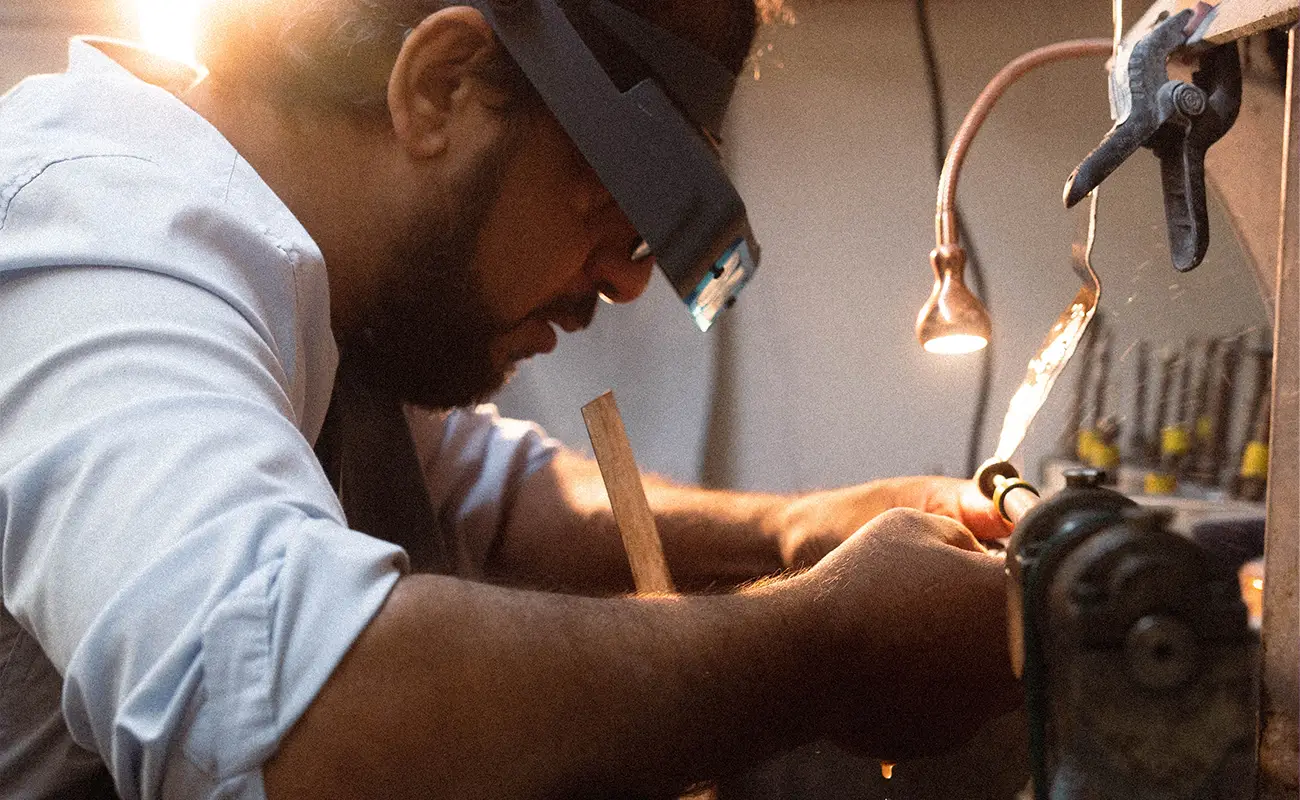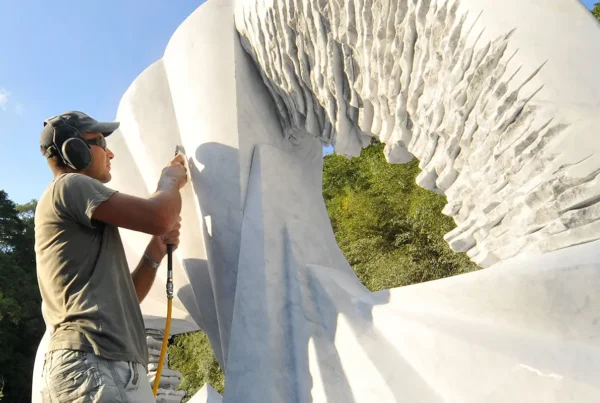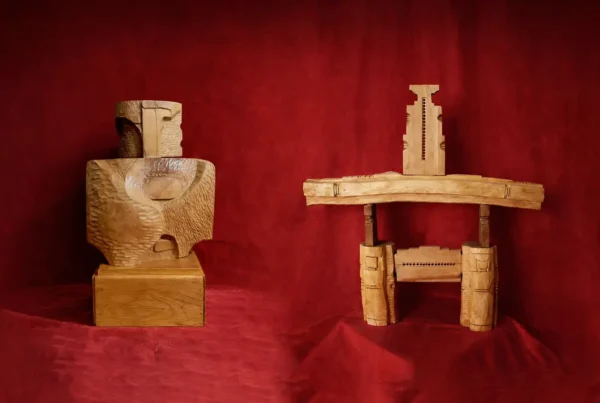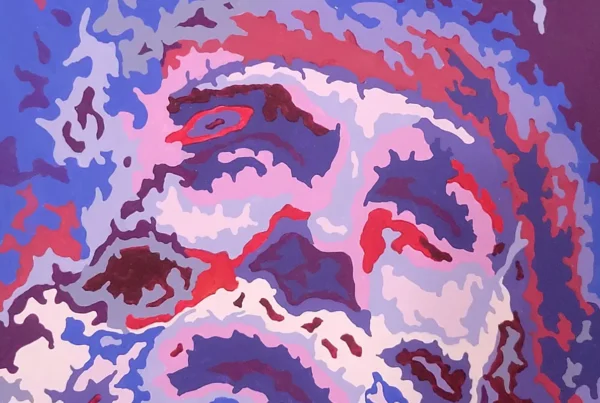“Art, at that point, wasn’t a profession. It was a necessity. It gave shape to silence and became my personal sanctuary.”
Echoes of Earth and Flight
Zabih Habib is a German-Afghan sculptor whose creative journey is defined by a lifelong dialogue with nature, heritage, and form. Raised in a family at the forefront of the Afghan gemstone trade, his early years were steeped in the raw beauty of minerals and the movement of the natural world. From a young age, Arabian stallions and falcons captured his imagination. These creatures, revered across Eastern and Middle Eastern traditions for their power, elegance, and symbolism, became enduring companions in his artistic language and helped shape a visual vocabulary that continues to evolve.
Habib’s adolescence in Germany brought formal training under master sculptor Harald Schunk, whose mentorship grounded his natural instincts in classical European technique. From this foundation, he developed a sculptural voice that values anatomical precision, structural clarity, and emotional restraint. These qualities lend his work a timeless sense of weight and balance. Over time, he expanded his repertoire to include not only fauna such as falcons, stallions, lions, and jaguars, but also flora and marine life, all rendered with the same reverence and sensitivity.
The American Southwest later provided a new source of inspiration. The vast desert landscapes and Indigenous spiritual traditions resonated with his intuitive approach. In this environment, he deepened his exploration of the sacred bond between humans and the natural world. His work increasingly became a synthesis of lapidary mastery and philosophical inquiry. These are pieces that do not merely depict life, but embody it. Across these environments, his art matured into a conversation between technique and spirit, past and present.
For Habib, the Arabian Peninsula, particularly the Emirates, has long been a place of deep creative alignment. Over nearly four decades, the region has not only inspired his artistic themes but also supported them through a network of collectors and collaborators. The stallions and falcons he sculpts are not ornamental; they are tributes to shared values such as resilience, grace, and legacy. The cultural and aesthetic ideals of the Emirates have profoundly influenced his practice, culminating in a dream project that remains central to his vision.
“For many years,” he shares, “I’ve envisioned a monumental installation. It would be deeply immersive, sculptural, and symbolic, designed specifically for a place like the United Arab Emirates or the Kingdom of Saudi Arabia. These nations don’t just support art, they embody it. They stand for vision, legacy, resilience, and refined luxury, principles that mirror my own philosophy.”
The envisioned work is a walkable sculpture garden composed of powerful animal forms, sacred geometry, and rare natural materials. It is meant to be an experiential space where visitors are enveloped by stillness, strength, and meaning.
“It would be my way of honoring the longstanding friendships and deep respect I hold for the people of the Emirates. I imagine a piece that reflects not only the leadership of His Highness Sheikh Mohammed bin Rashid Al Maktoum and His Highness Sheikh Hamdan bin Mohammed Al Maktoum, but also the enduring beauty of the Arabian natural world. This would be more than a sculpture. It would be a legacy piece.”
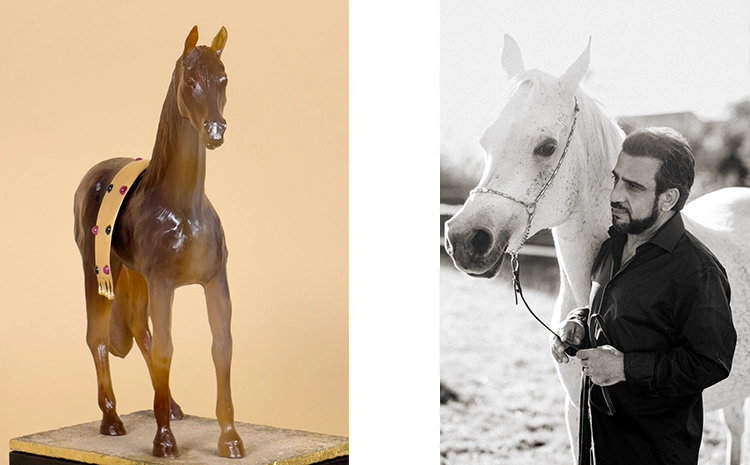
From Conflict to Craft
The roots of Habib’s artistic journey trace back to the turbulence of Afghanistan during the Soviet Union’s occupation. This period was marked by violence and upheaval. Amid the instability, nature became his refuge. The sight of a falcon gliding overhead or a stallion racing across the dusty terrain was not just inspiring; it was essential. These images anchored him emotionally, offering moments of clarity in a chaotic world. Before sculpture became a profession, it was a means of survival. Art gave shape to silence.
His move to Germany as a teenager provided new structure for this emotional instinct. Under Schunk’s rigorous guidance, he learned that craftsmanship requires both discipline and sensitivity. Through sculpture, he began to translate memory into form and emotion into material. It became a language for processing the past and shaping the future.
Later, his time in the American Southwest awakened something primal. The vast scale of the terrain matched the emotional scope he had long carried within him. Here, he began pushing the boundaries between traditional lapidary craftsmanship and contemporary sculpture. He developed a style defined by equilibrium, combining heritage and innovation, form and essence, technique and intuition.
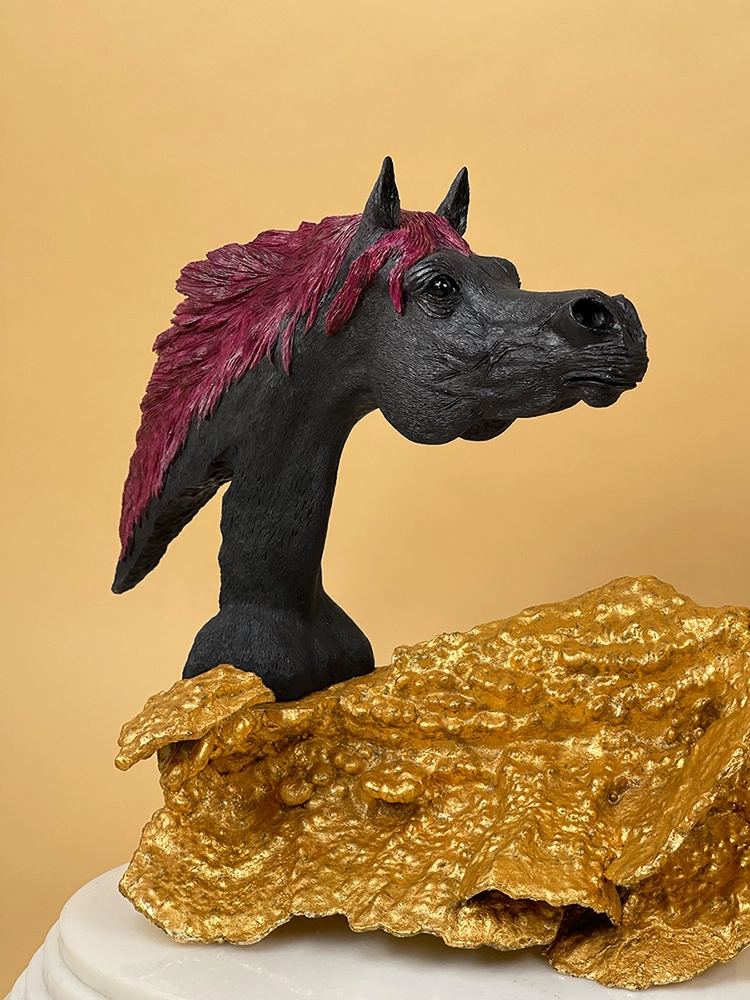
In the Presence of Gemstones and Silence
Habib’s medium is not stone in the ordinary sense. It is gemstone. He works with some of the earth’s most revered materials, including sapphires, emeralds, lapis lazuli, diamonds, and solid 18-karat gold. These are not embellishments; they are central to his practice. Each gemstone is approached not as a resource, but as a partner, a relic of geological time that carries memory and meaning. Rather than forcing his vision onto the material, Habib listens. He allows the natural lines, textures, and energies of each stone to suggest its form. The resulting sculptures feel discovered as much as designed.
Animals remain central to his work, though not as mere anatomical studies. His sculpted figures include Arabian stallions, falcons, eagles, and panthers, each evoking a sense of inner life. A poised gaze, the tension of a muscle, or the stillness before movement becomes a vessel for emotion and symbolism. Across cultures, these creatures represent freedom, courage, and spiritual vitality. In his hands, they become monuments to those universal truths.
His studio is a sanctuary of silence. Interruptions are rare, and focus is deliberate. Bones, feathers, raw gemstones, and maquettes surround him, blurring the line between artist and subject. Often, a gemstone will remain in his line of sight for months before carving begins, allowing the form to take shape in his mind long before it meets the blade. This slow, reverent process transforms each sculpture into an act of communion: a quiet exchange between creator and creation.
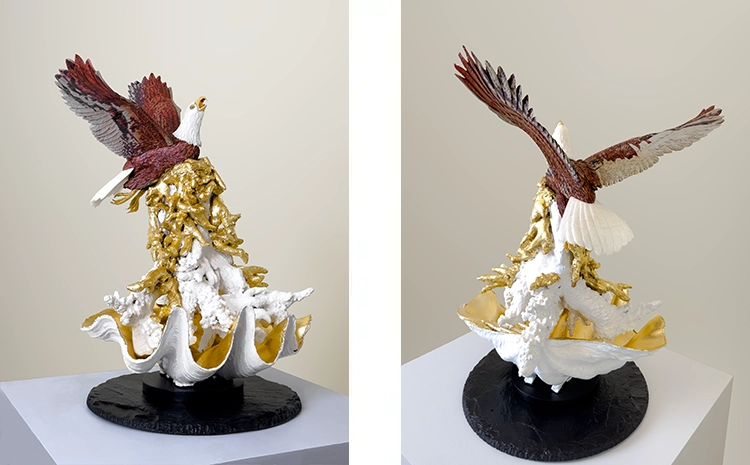
Winds of Eternity and the Architecture of Legacy
Among Habib’s most defining works is Winds of Eternity, completed in 2024 after two years of focused, contemplative labor. Weighing 18 kilograms, the sculpture features a bald eagle, an emblem chosen for its global symbolism of resilience, clarity, and freedom. For Habib, the eagle represents a synthesis of cultural narratives and personal ideals. It reflects the very dualities that shape his practice: groundedness and flight, strength and stillness, tradition and innovation.
The materials used amplify the message. The body of the eagle, carved from Picasso Jasper, ripples with dynamic natural patterns. Its head, rendered in White Dolomite, offers focus and purity. Talons and beak in 18-karat gold provide luminous accents and a sense of permanence. The base, a gold-gilded coral formation atop a Tridacna clam shell, connects the soaring figure to the depths of the sea. The sculpture unites air and water, motion and stillness, sky and earth.
More than a technical achievement, Winds of Eternity is a statement of philosophy. It invites viewers not just to observe the sculpture, but to enter its atmosphere. This is not reality reflected. It is reality elevated, a testament to what art can become when form and spirit move in unison.
Through decades of transformation across continents and cultures, Zabih Habib’s work continues to speak in a clear and contemplative voice. It is a voice carved not only in gemstones, but in memory, meaning, and time.
